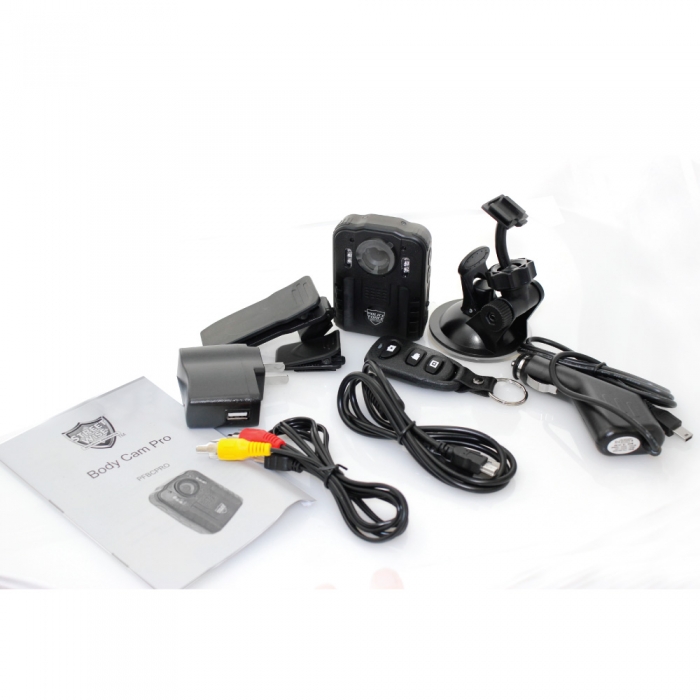Research on Body-Worn Cameras and Law Enforcement
Overview of Body-Worn Camera Use by Law Enforcement
In a sample of police departments surveyed in 2013, approximately 75 percent of them reported that they did not use body-worn cameras. The survey was funded by the Office of Community Oriented Policing Services and conducted by the Police Executive Research Forum (PERF).[1]
PERF’s report about the survey notes a number of perceived benefits for using body-worn cameras, including better evidence documentation and increased accountability and transparency.[2] But the report also notes many other factors that law enforcement executives must consider, such as privacy issues, officer and community concerns, data retention and public disclosure policies, and financial considerations.[3] The costs of implementing body-worn cameras include not only the cost of the cameras, but also of any ancillary equipment (e.g., tablets that let officers tag data in the field), data storage and management, training, administration, and disclosure.[4]
To date, little research is available to help law enforcement executives decide whether and how to implement the use of body-worn cameras in their departments.
NIJ is currently funding two studies — a CNA Corporation study of the impact of body-worn cameras in the Las Vegas Metro Police Department and a Los Angeles Police Foundation evaluation of body-worn video technology in the Los Angeles Police Department.
Additionally, through the National Law Enforcement and Corrections Technology Center (NLECTC) system, NIJ funded the development of a primer on body-worn cameras for law enforcement and a market survey of camera systems.
Ongoing NIJ-Funded Research on Body-Worn Cameras
NIJ is currently funding two studies on body-worn cameras:
Research on the Impact of Technology on Policing Strategies. In 2013, NIJ funded CNA Corporation to examine the impact of body-worn cameras in the Las Vegas Metro Police Department. Researchers will study the implementation of body-worn cameras in the department, including adherence to department policy and the effect of sergeants on patrol officers’ use of body-worn cameras. Researchers also will study the use of body-worn cameras by 400 officers in the field to learn about the effect of body-worn cameras in police-citizen encounters, including measures of use of force. Finally, the researchers will conduct a cost-benefit analysis to estimate the time officers spend in court or on suspension as a result of negative interactions with citizens.
Testing and Evaluating Body-Worn Video Technology in the Los Angeles Police Department. In 2014, NIJ funded the Los Angeles Police Foundation to conduct an evaluation of body-worn video technology in the Los Angeles Police Department. Researchers will study how body-worn video technology is used in the field and its impact on police-citizen behavior and on crime. The study will address a number of questions that fall into five general categories:
- Using body-worn video technology
- Privacy concerns
- Police legitimacy and changes in police services
- Crime reduction
- Use of advanced analytics
Among the sources of data that researchers will use are information on citizen complaints, use of force and crime. They also will conduct interviews and surveys with officers and interviews with citizens.
Primer on Body-Worn Cameras for Law Enforcement
Developed by the NIJ-funded NLECTC Sensor, Surveillance and Biometric Technologies Center of Excellence, A Primer on Body-Worn Cameras for Law Enforcement provides an introduction to body-worn camera systems. The 2012 report discusses the functions and features of body-worn camera systems and highlights issues and factors that law enforcement organizations should consider before and during implementation.
Technical Guidance on Body-Worn Camera Technologies
Agencies should consider how body worn cameras will meet their mission needs and requirements prior to procurement and use of the technology. To provide general guidance to law enforcement practitioners, NIJ, NIST and the FBI developed a table listing operating characteristics and associated functionality descriptions based on existing technical resources about criminal justice use of video.[5],[6] The operating characteristics and associated functionality descriptions in the table can help agencies determine what they need as they consider the commercial products available.
Market Survey of Body-Worn Cameras for Criminal Justice
The NIJ-funded NLECTC Sensor, Surveillance and Biometric Technologies Center of Excellence conducted a market survey on body-worn cameras for criminal justice. The survey, published in 2014, aggregates and summarizes information on a number of makes and models of body-worn cameras available today, including the approximate costs of each unit.
For the Body Worn Camera Podcast #1 Click Below
To Purchase the Police Force Tactical Body Camera Pro
Click Here

